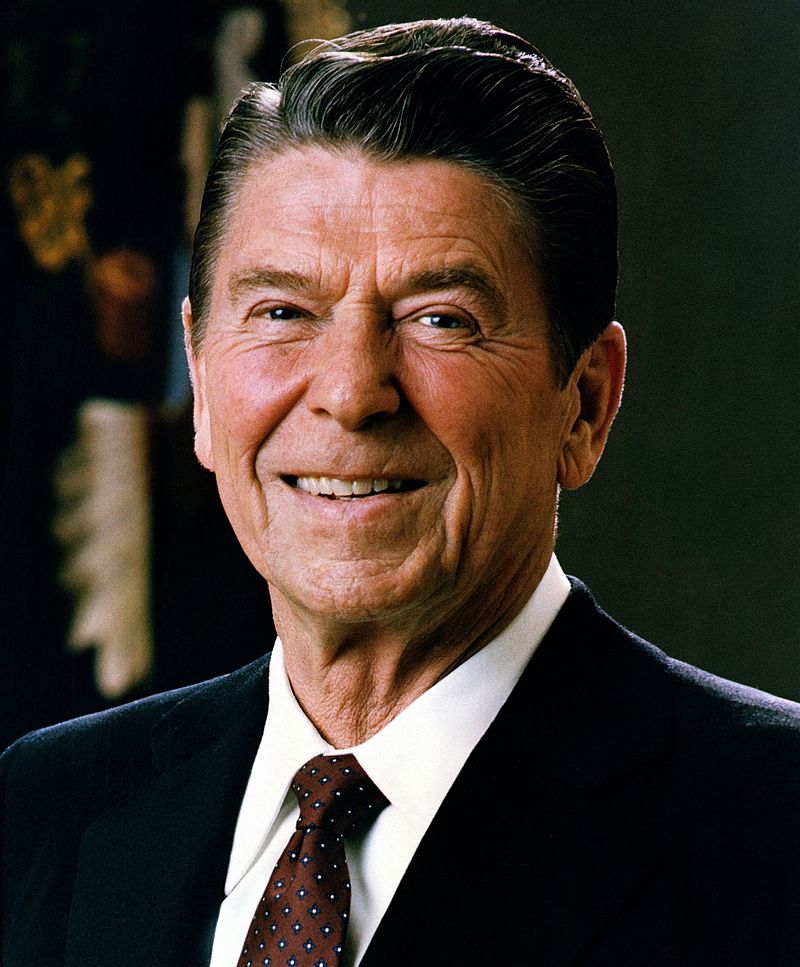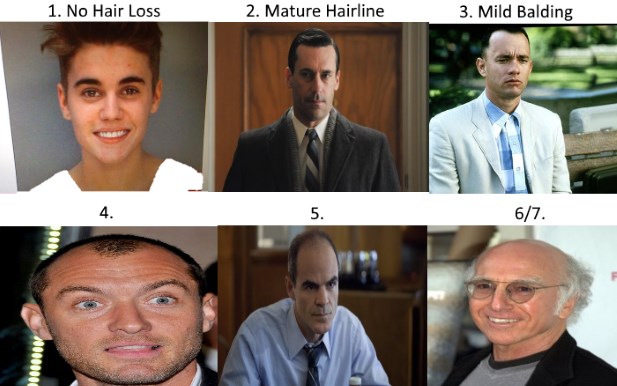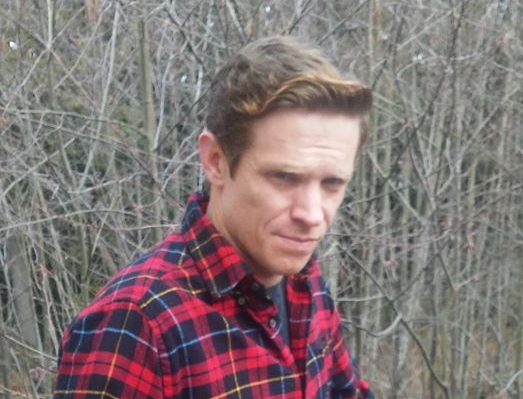Last Updated on April 14, 2017 by Robert Price
Many men become paranoid when they start developing their mature hairlines. But there’s no reason to panic, I assure you. The subject can be confusing, and hair loss is an emotional topic for many men. That’s why I decided to put together this post, describing 7 surprising but true facts about the mature hairline. Here they are:
1. 95% of White Men Will Develop a Mature Hairline (or Worse)
Ronald Reagan and Ross from Friends are the exceptions, not the norm. Almost all white men will either develop a mature hairline or genetic balding. Hairline maturation is observed in men of most other races and ethnicities, too.

President Reagan had a “straight across” juvenile hairline for life. Interestingly, presidents Clinton and Obama both have juvenile hairlines as well. Coincidence? You tell me!
2. “Maturation” Can Occur Anytime from Age 16 to Age 30
It can even go slightly outside of that range on occasion. Most men will develop their mature hairlines between the ages of 18 and 25. David Bowie and Wayne Gretzky are two examples of celebrities who were late bloomers; they both retained their childlike hairlines until they were around 30.
3. It’s Not Generally Considered a form of Balding
Some guys on the hair loss forums disagree. But most experts and hair loss organizations don’t consider a mature or maturing hairline to be a form of male pattern baldness. Feeling better? Good. We’ll move on to the next point. But first, check out the picture below which depicts the 7 classes of the Norwood Scale, with celebrity examples.

This is a picture of the norwood scale, with celebrity examples. The scale contains seven “classes” of hair loss. Type 1 is the juvenile hairline, meaning no hair loss. Type 2 is the mature hairline. 3 is the first primary class of balding. 6 is Prince William. 7 is Dr. Phil. For some examples of what mild balding can look like, check out this post featuring 10 celebrities with early or mild hair loss.
4. It’s Not Fully Understood, But Most Likely Caused by DHT
And yeah, DHT is the same root cause of male pattern baldness. Other factors may also play a role, but those factors aren’t fully established. Like many furry animals lose their juvenile coats, most men lose their juvenile hairlines. That’s why some fastidious (and often insufferable) types on the hair loss forums advocate minoxidil and/or finasteride to men with maturing hairlines. I think that’s a ridiculous idea, personally, as I explain in my in-depth article, The Mature Hairline Explained – Are You Balding or Maturing?
5. The Process Can Take Up to 10 Years to Complete!
Sometimes the transition from a juvenile hairline to a mature hairline can be very slow. It can also occur quite rapidly, within a year or two. How long it takes in your case going to be mostly determined by your genetics, though other factors like smoking and a poor diet may accelerate the process. The transition may be awkward for some men, especially when the recession creates a “chewed out” appearance along the hairline, and/or if it occurs in an asymmetrical manner. On the other hand, many men don’t even notice they’ve lost any hair at all!
6. We’re Only Talking about a Finger Width of Recession
If you’re like most men, the central point of your juvenile hairline was once located at your highest forehead wrinkle. Your mature hairline shouldn’t be much more than an index-finger width higher than that wrinkle, which is about .5 to 2/3 of an inch, or 1-1.7 cm. If your hairline goes up higher than that, then you’re probably dealing with genetic balding. Your corners will also recede, creating a v-shaped hairline.
7. It Doesn’t Mean Baldness is Imminent
So chill! The ISHRS (International Society of Hair Restoration Surgeons) states that men have about a 20% of experiencing balding in their 20s, 30% in their 30s, 40 in the 40s, all the way up to 90% in the 90s. So you could easily retain your mature hairline well into your middle ages or beyond. The American Hair Loss Association states that by the age of 35, 2/3 of men have “appreciable” hair loss. Whatever that means. I explain the huge disparity between the two organizations’ figures in my hair loss 101 article, if you’re interested. But based on what I’ve observed, a significant percentage of men do retain full heads of hair into their 40s and 50s.
There you have it. Those are the 7 surprising facts about the mature hairline. If you’re concerned your hair loss may have moved beyond the “maturing” stage, I’d suggest reading up on the top 7 treatments for hair loss. Or you could let it go! No doubt, there are many benefits to embracing baldness. Share this with your buddies who may be going through this maturation process if you feel inclined. And, of course, feel free to leave a question or comment below.
Robert Price is a writer, consumer advocate, and hair loss researcher with thousands of hours of experience in the field. His goal is to keep you out of the hair loss rabbit hole, underworld, or whatever you want to call it. He founded Hair Loss Daily, the unbiased hair loss blog, in 2016. You can learn more about Robert in the my story section of this website.

